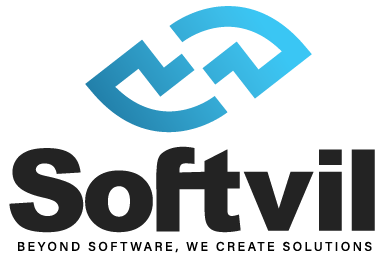Introduction
Expanding a software development team is crucial for tech companies’ growth. Options like in-house hiring, onboarding freelancers, outstaffing via a software outsourcing company, offshore, and nearshore development are available. Each approach has pros, cons, and considerations. Building an in-house team enables close collaboration, but requires time and resources. Freelancers offer flexibility and affordability, but may pose security and communication risks. Outstaffing firms like Softvilmedia provide a global talent pool of remote developers and reduce administrative burdens. Offshore development provides cost savings and round-the-clock work, but managing communication across time zones can be challenging. Nearshore development leverages proximity and cultural alignment, tapping neighboring talent. Considering project nature, cost, communication, and skilled developers, make an informed decision. In-house hiring, freelancers, outstaffing, offshore, or nearshore development can help expand your team. Choose wisely for your company’s growth and success.
Building an In-House Team

Building an in-house team offers several benefits for extending your software development capabilities. One major advantage is the ability to have permanent employees who are fully dedicated to your company. This fosters a sense of loyalty and commitment among team members, leading to better teamwork and collaboration. In-house teams also allow for smoother communication and more effective management, as team members can work side-by-side, enabling real-time coordination and problem-solving.
Benefits and Challenges of Hiring Permanent Employees
Hiring permanent employees for your in-house team offers numerous advantages. Permanent team members tend to exhibit higher levels of loyalty, commitment, and alignment with the company’s goals and values. They are dedicated solely to your organization, fostering a sense of ownership and accountability. Furthermore, in-house teams promote a collaborative work environment where team members can easily communicate and work together on projects, leading to enhanced synergy and knowledge sharing.
However, there are challenges to hiring permanent employees as well. The costs associated with salaries, benefits, taxes, and overhead expenses can be substantial, particularly when compared to other options like outsourcing or freelancing. Additionally, the hiring process for permanent employees can be time-consuming, involving job postings, interviews, and onboarding procedures. Moreover, terminating employees from an in-house team may be legally and administratively complex, requiring careful adherence to labor laws and contractual obligations.
Managing Workflow and Fostering Collaboration in an In-House Team
Effectively managing workflow and fostering collaboration within an in-house team is essential for maximizing productivity and achieving project success. Establishing clear roles and responsibilities for each team member ensures that everyone understands their tasks and areas of expertise. This clarity helps streamline workflows, avoid duplication of efforts, and maintain accountability.
Fostering collaboration involves creating an environment that encourages open communication and knowledge sharing. Regular team meetings, both formal and informal, can provide opportunities to discuss project progress, address challenges, and share ideas. Emphasizing a culture of collaboration and teamwork cultivates a sense of camaraderie among team members, leading to increased motivation and engagement.
Onboarding Freelance Developers

Flexibility and Affordability of Working with Freelancers
Hiring freelancers provides flexibility in scaling your team according to project requirements. Freelancers can be engaged for specific tasks or projects, allowing you to access specialized skills as needed. This flexibility allows for rapid resource allocation and cost optimization, as you only pay for the work completed. Additionally, freelancers often have diverse industry experience and can bring fresh perspectives and innovative ideas to your projects.
From a cost perspective, working with freelancers can be more affordable compared to hiring permanent employees or outsourcing to development firms. Freelancers typically operate as independent contractors, eliminating expenses such as benefits, office space, and equipment. Hourly rates for freelancers vary based on their skill level, location, and expertise, providing options for different budget constraints.
Security Concerns and Potential Communication Issues
While freelancers offer flexibility and cost advantages, there are considerations regarding security and communication. Engaging external freelancers may involve sharing sensitive information or granting access to proprietary systems, raising concerns about data security. It is crucial to have robust confidentiality agreements in place and implement secure communication channels and data protection measures to mitigate these risks.
Communication can be a potential challenge when working with freelancers, particularly if they are located in different time zones or have limited availability. Clarity in project requirements, expectations, and deadlines becomes essential to ensure smooth collaboration. Effective communication tools, regular check-ins, and clear documentation of project scope can help minimize potential communication issues.
Hiring an Outstaffing Firm

Hiring an outstaffing firm to extend your software development team presents distinct advantages.
Advantages of Accessing a Global Talent Pool
Outstaffing allows businesses to tap into a global talent pool, providing access to a diverse range of skilled professionals. By partnering with an outstaffing agency, such as nCube, you can leverage their extensive network and expertise in sourcing top-notch developers from different regions. This global talent pool offers a wider range of skills, experiences, and perspectives, enabling you to find the right talent that aligns with your specific project requirements.
Accessing a global talent pool also brings cultural diversity, which can enhance creativity, problem-solving, and innovation within your development team. Different backgrounds and experiences can contribute to fresh ideas and approaches, fostering a dynamic and collaborative work environment.
Minimizing Administrative Burdens and Optimizing Costs
When hiring an outstaffing firm, administrative burdens related to recruitment, onboarding, and HR management are typically handled by the agency. The outstaffing agency takes care of tasks such as candidate screening, contract management, payroll, and benefits, freeing your organization from these time-consuming responsibilities. This streamlines the hiring process and allows you to focus on core business objectives and project management.
From a cost perspective, outstaffing can provide cost optimization benefits. Compared to in-house hiring, outstaffing can be a more cost-effective option as it eliminates overhead expenses associated with permanent employees. Outstaffing firms often offer competitive pricing models tailored to your specific needs, allowing you to optimize costs while gaining access to skilled professionals.
Offshore Development

Offshore development has become a popular approach for extending software development teams.
Exploring the Benefits of Offshore Development
Offshore development offers several benefits, including cost savings and round-the-clock development. Many companies choose offshore development to leverage lower labor costs in certain regions, allowing them to access highly skilled developers at a fraction of the cost compared to local hiring. This cost advantage can significantly reduce project expenses and increase the overall return on investment.
Additionally, offshore development allows for round-the-clock development. With teams located in different time zones, work can progress continuously. While the onshore team completes their day, the offshore team can continue working on the project, leading to faster development cycles and shorter time-to-market.
Managing Communication and Coordination Challenges
Managing communication and coordination can be challenging in a geographically dispersed team. Differences in time zones, cultural nuances, and language barriers can hinder effective collaboration. It is crucial to establish robust communication channels, leverage collaboration tools, and foster a culture of clear and timely communication.
Regular virtual meetings, video conferences, and chat platforms facilitate real-time communication between onshore and offshore teams. Documentation and project management tools help streamline information sharing and ensure everyone is on the same page. Building relationships and establishing rapport between team members through team-building activities and occasional onsite visits can also improve coordination and strengthen teamwork.
Nearshore Development

Nearshore development, the practice of outsourcing software development to neighboring countries, offers several advantages.
Proximity Advantages and Cultural Alignment
One of the primary benefits of nearshore development is the geographic proximity between the outsourcing company and the development team. This proximity brings advantages such as easier travel and more convenient time zone overlaps. Close physical proximity allows for face-to-face meetings, on-site visits, and better collaboration, fostering a deeper understanding of the project requirements and business goals. It also enables a quicker response to any urgent issues or changes that may arise during the development process.
Cultural alignment is another significant advantage of nearshore development. Neighboring countries often share similar cultural values, business practices, and work ethics. This alignment can help establish effective communication, reduce misunderstandings, and promote a harmonious working relationship between the outsourcing company and the nearshore development team. Cultural affinity can contribute to smoother collaboration, faster knowledge transfer, and overall project success.
Leveraging Neighboring Countries for Talent and Collaboration
Nearshore development allows businesses to tap into a pool of talent in neighboring countries. These countries may have a rich talent pool of skilled developers, often with a similar educational background and technical expertise. Leveraging this talent allows companies to access high-quality resources without the challenges associated with language barriers, significant time zone differences, or substantial cultural differences.
Collaboration is also enhanced in nearshore development due to similar working hours and better alignment of business practices. Real-time collaboration, frequent communication, and joint problem-solving become more feasible, as the nearshore team operates in a similar time zone. This facilitates efficient knowledge sharing, faster decision-making, and a stronger sense of teamwork.
Conclusion
Choosing the right approach to extend your software development team is a critical decision that can impact your company’s success. By carefully considering factors such as budget, project requirements, communication preferences, and long-term goals, businesses can make an informed choice that aligns with their specific needs. Whether it’s building an in-house team, hiring freelancers, working with an outstaffing firm, exploring offshore development, or considering nearshore options, understanding the advantages, disadvantages, and considerations of each approach is essential for making the right decision.

